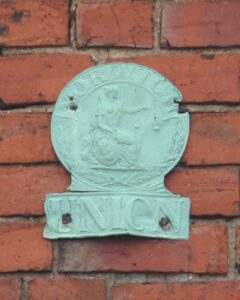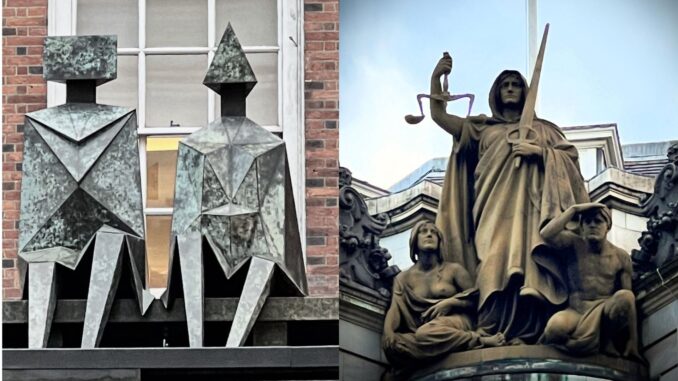
It’s often said that if you spend your time just looking at street level then you miss a huge amount of the art and history of the capital, and there’s a good example of this in a short stretch of the south side of Piccadilly, where two very different sculptural groups gaze down on the streets below.
The first is on the corner of St James’s Street. Look upwards and you will see the cloaked figure of Justice, scales in one hand, sword in the other, with two attendants.
It’s by the sculptor Hibbert Charles Binney (1872-1951) and dates from the middle of the first decade of the 20th century, as does the building itself. This was the former west end offices of the Norwich Union Insurance Company, and is in the rather muscular ‘Edwardian Imperial’ architectural style – neo-Baroque, with lots of curves, columns and exterior decoration*.
Binney’s sculpture shares this muscularity and Imperial ‘Grand Manner’. Justice herself is severe and powerful, well-equipped to punish the wrongdoer. At her feet is a semi-naked woman (despite the general prudishness of the age, public nudity was fine if it was ‘art’. See also Boudicca on the Embankment) who is holding an ear of corn. This is a reference to a fable of Aesop – the harvested corn is improved by threshing, the point being that punishment ‘improves’ the punished, so is to be encouraged.
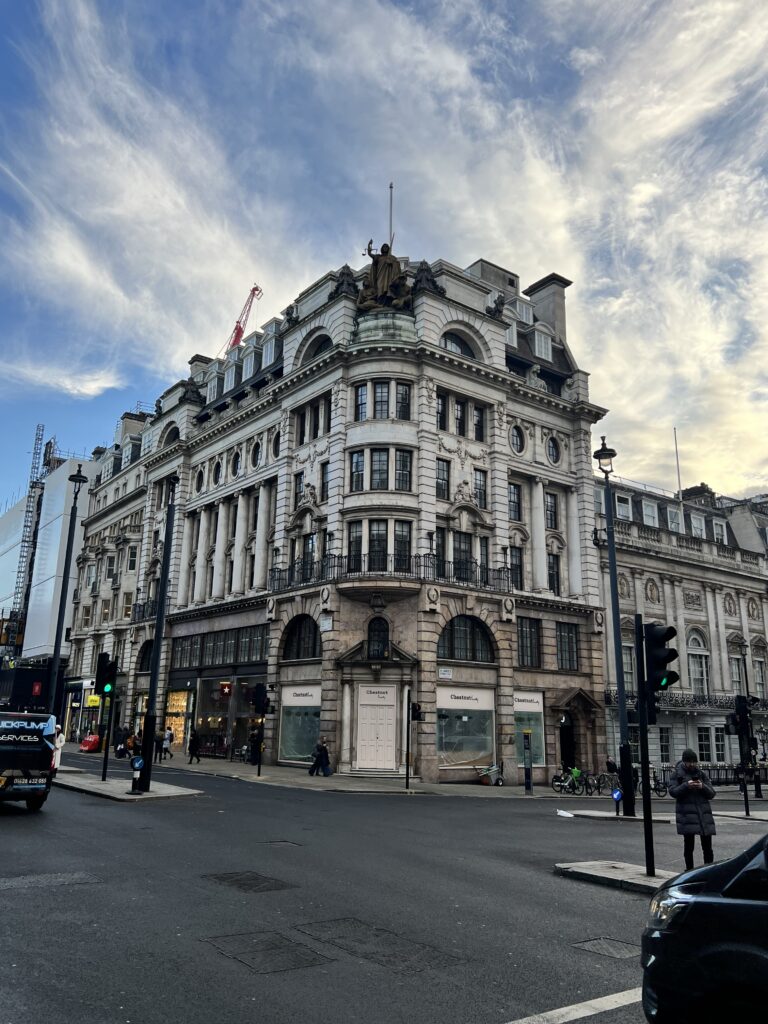
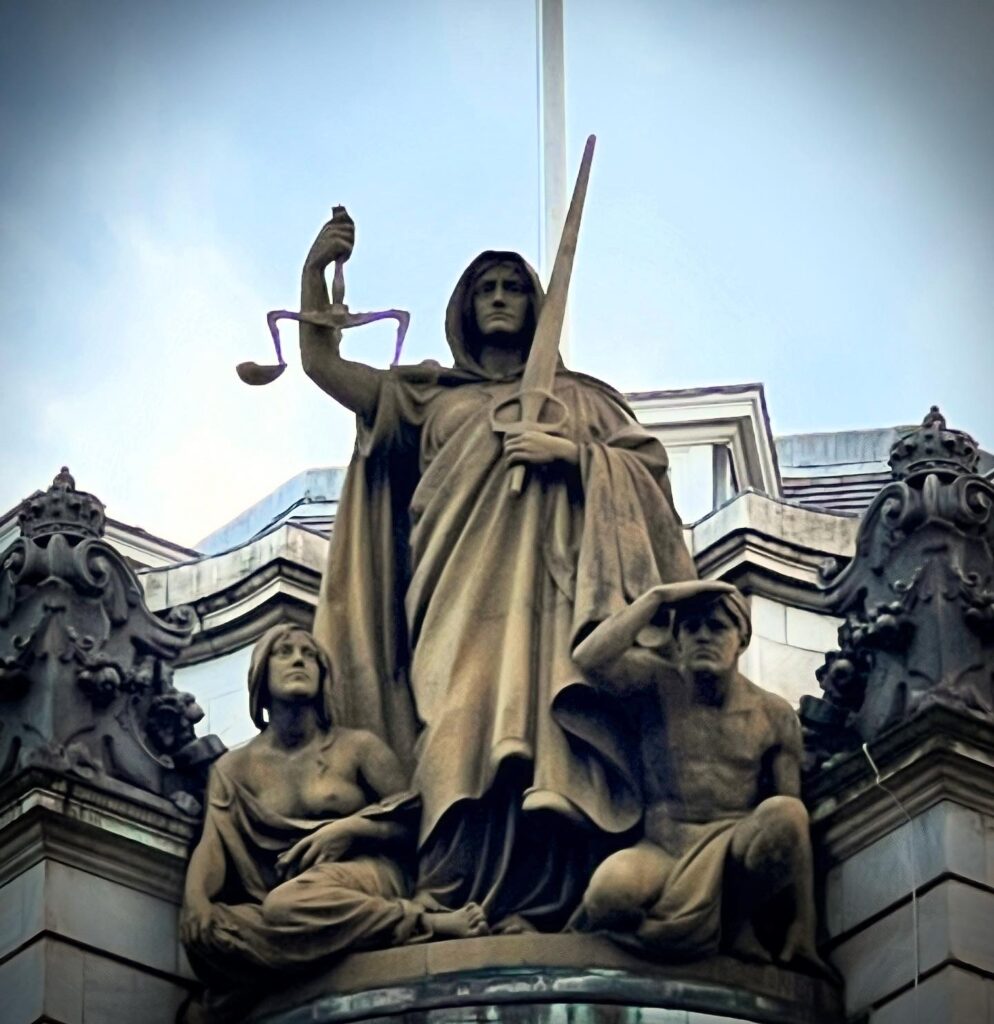
Quite how ‘Justice’ personified relates to an insurance company is not clear, but presumably Norwich Union were trying to associate their products with ‘fairness’, and it seems that the company had used an image of Justice from the earliest days of its business on the ‘fire insurance marks’ that would have been attached to insured properties.
In contradistinction to the ‘grandness’ of Binney’s group, on the next block down Piccadilly is a more abstract work by Lynn Chadwick.
This stands (more appropriately, ‘sits’) above the entrance to the (very) upmarket grocer Fortnum and Mason, and consists of two seated figures cast in bronze called ‘King and Queen’. These figures are made up of interlocking triangular shapes, and the artwork dates from 1990.
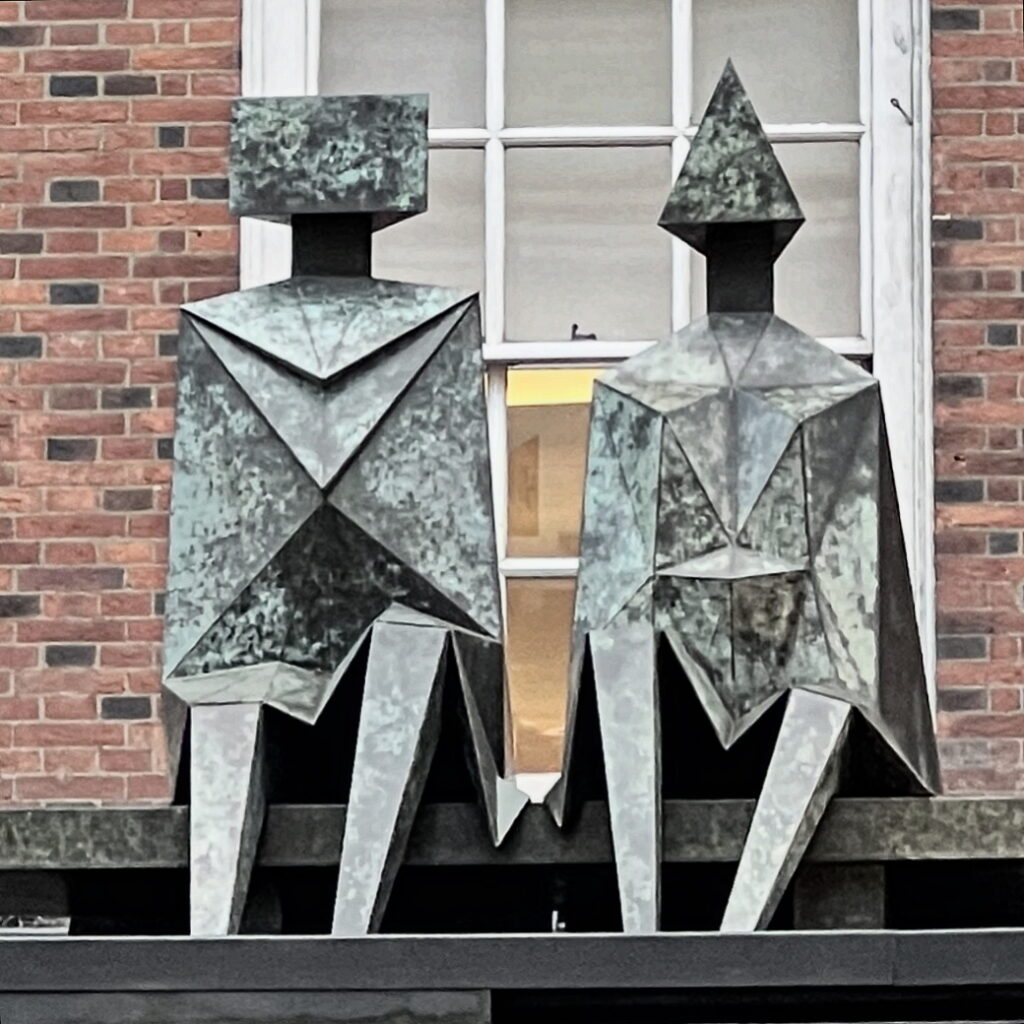
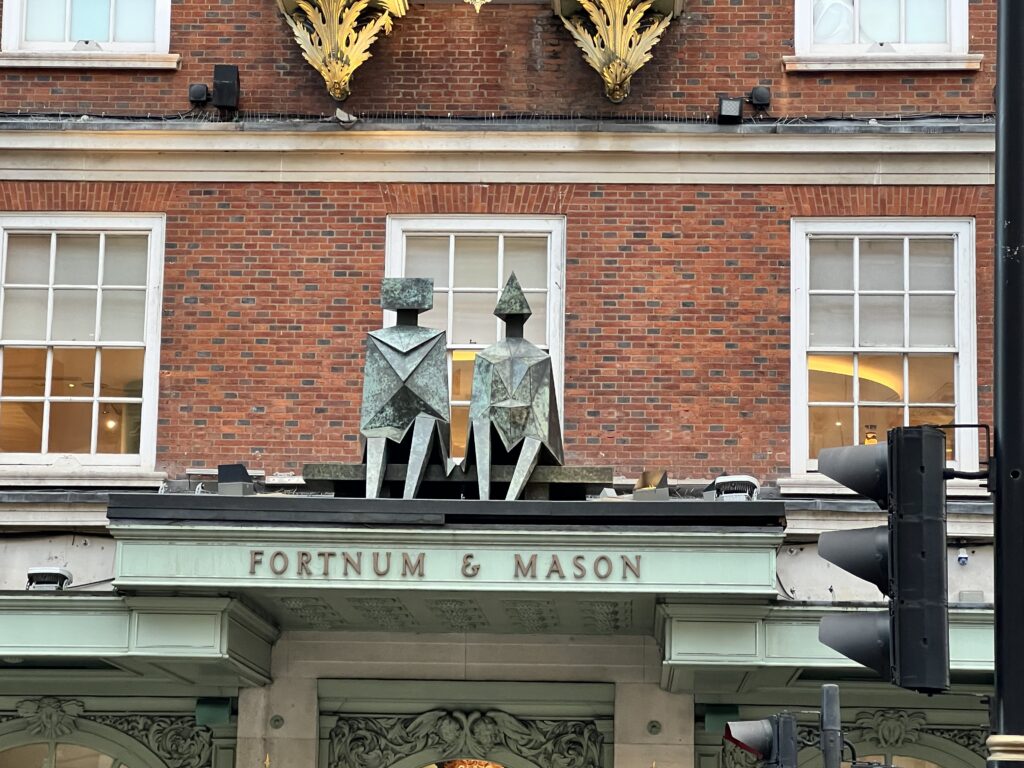
They were installed as part of an exhibition of more than 60 modern works from the collection of Frank Cohen that was held at the store in 2016. I don’t know whether Fortnum’s bought the sculpture, or Cohen has given it on long term loan, but there it remains, the two figures casting their regal gaze onto the flowing crowds and stagnant traffic of the A4.
*”a design which completely travesties the late Baroque manner” according to the 1960 Survey of London

